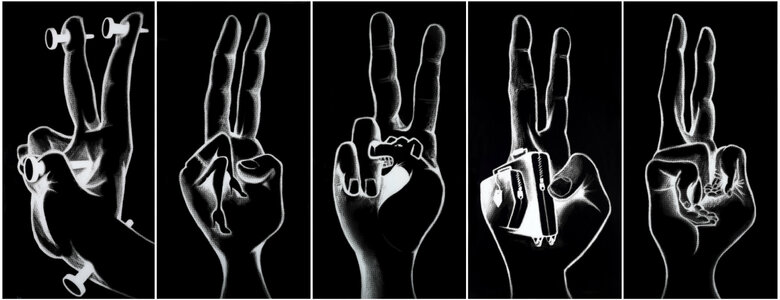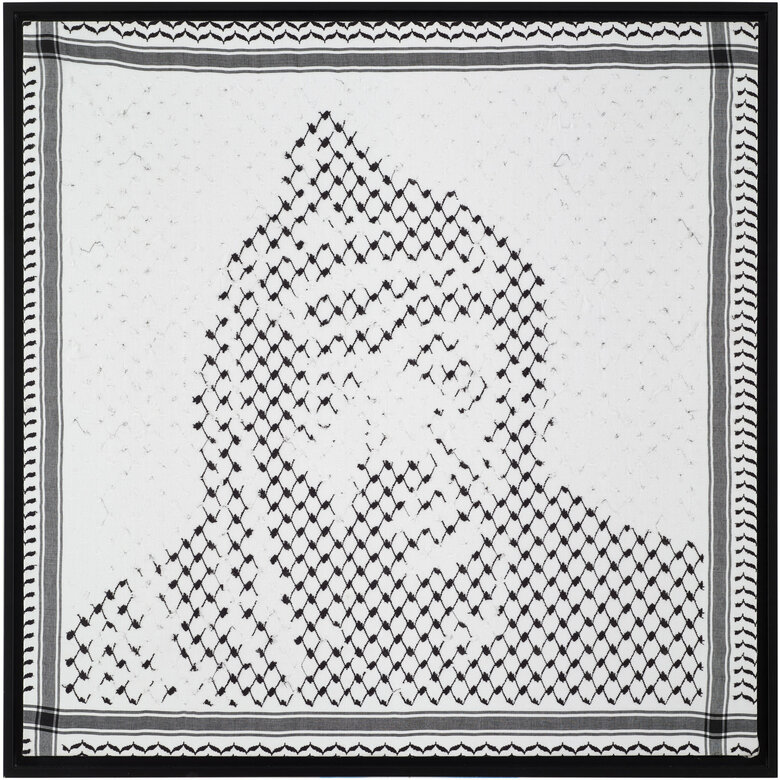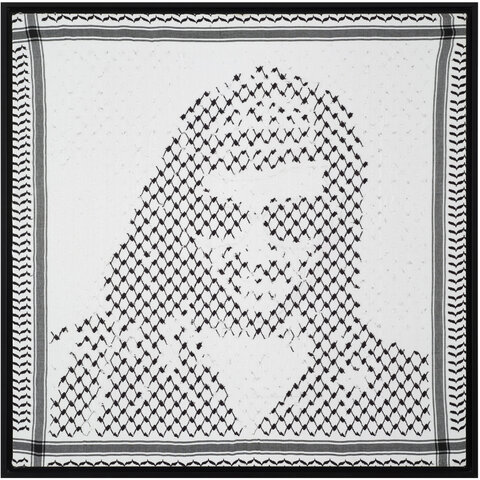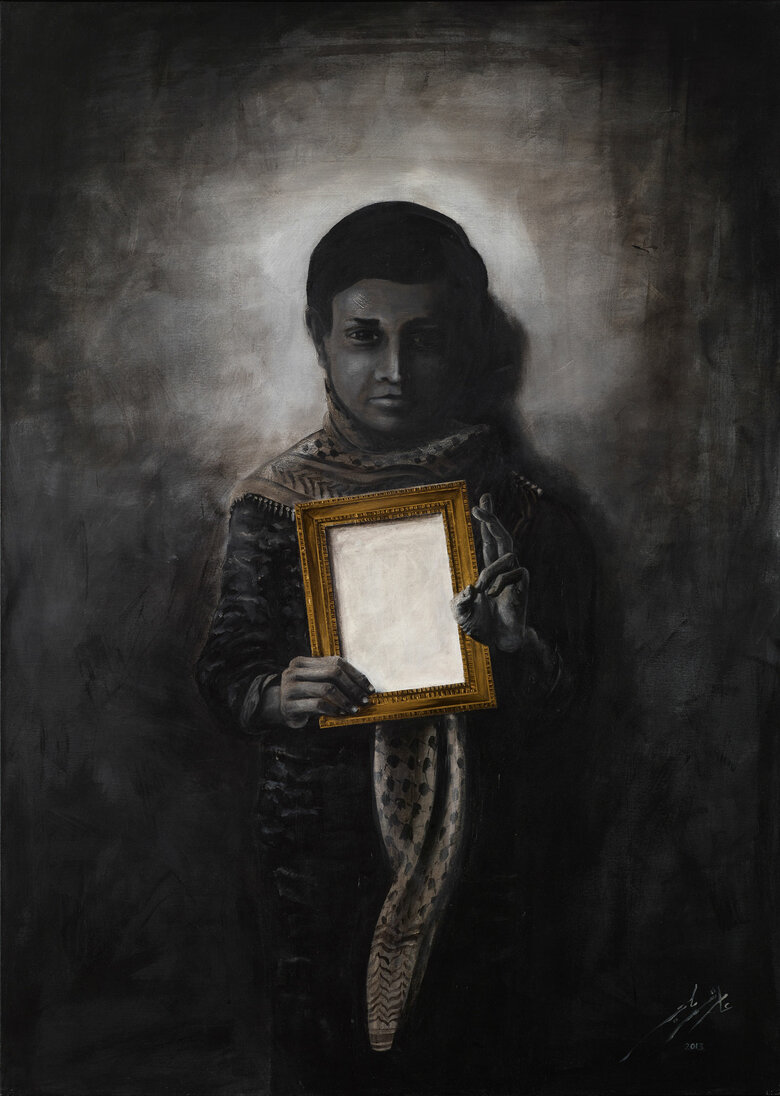Palestinian artist Amer Shomali’s piece Broken Weddings in Deir Nakhas, 2018, is a conceptual reconstruction of traditional patterns of Palestinian embroidery (tatreez). The patterns are 'conceptually' taken from wedding dresses (thobe) that were left behind during the 1948 Nakba. The inspiration behind this work is from an Israeli auction in 2017, that Shomali knew about, where a Palestinian embroidered wedding dress was up for sale. The thobe was never worn, and was supposedly found in an abandoned home during the 1948 Nakba by a member of the Zionist paramilitary groups at the time.
The auctioned wedding dress (thobe) symbolizes weddings that never took place. Usually, Palestinian women would begin sewing their own dresses at a young age, so that it is ready by the time they become brides. As a tribute, Shomali reconstructed some details from the dress patterns of each Palestinian village, and replaced the stitches with a completely new ball that was never used before. These are then stacked next to each other to make up the pixelated pattern. Shomali explains that the newness of the spools represents all “the dresses that were not embroidered, broken weddings, unperformed songs, unbuilt homes, unborn children… it stands witness to all that could have been for those whose lives were amputated in 1948.” This artwork highlights the loss of community in terms of not just people, but the intimate moments that build a society and makes it thrive.
The alignment of the spools highlights the vibrancy of the colors used in the dresses, while simultaneously symbolizing a grave yard. It reflects the catastrophe of loss and displacement at the most personal level. The work is a monument to a once forgotten special moment, but it is through the process of remembrance that hope is reignited. It forces its viewer to accept both the survival of the ‘wedding dress’, and its transformation into something else while retaining its essence.

-high-resJPG.jpg)
-high-resJPG.jpg)











